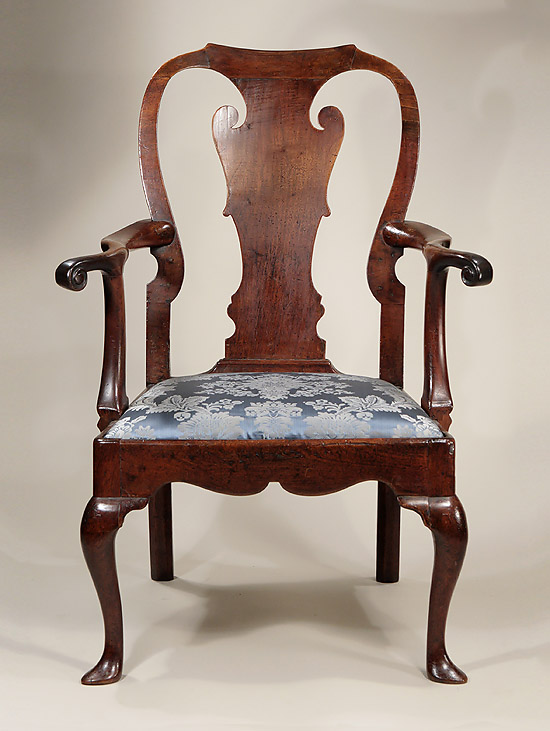'PROVENANCE' :
The history of ownership of a valued object.
The first known use of the term was in the late 18th century.
Simply put – provenance is the documented history of the piece.
While provenance alone does not determine the value of a piece, it can add to (or subtract from)
the desirability and value of a piece regardless of maker.
After all, isn't Liberace's piano more interesting than my neighbor Fred's piano??
Provenance is beneficial for collectors since it can add to the reputation of a piece.
It can also assure a buyer that other museums or collectors with well-respected qualifications have approved it.
Provenance may be offered in a number of ways : armorials and coats of arms are common in silver or glass.
Furniture provenance may be claimed by referencing bills of sale, original delivery labels,
older catalogs, pictures of pieces in a certain collection or home,
or even "by repute" via word of mouth, or duration of family ownership.
However, much caution should be taken :
"original bills of sale" may simply be printed on older paper,
labels may be moved from one piece to another,
and length of time in a certain family may be embellished.
This elegant walnut open armchair (England, c1720) carries 80 years of
documented history as part of the Colonial Williamsburg Collection,
bearing the 1936 museum acquisition inventory number 1936-291
(verified onsite in Williamsburg's archived inventory books).

Colonial Williamsburg archived documents reflect purchase of this chair
from Christie's London in 1936, with subsequent exhibition locations of
Governors Palace, Burt House, and Lightfoot House.

George I Walnut Open Armchair
England, c1720
Provenance : Colonial Williamsburg Collection
bearing museum acquisition label, 1936-291
Some provenance is merely "by repute", meaning there is no written documentation.
Perhaps the history is only verbal, perhaps a portion of the pages were lost at some time.
Older catalogs had only descriptive text - no images were used, adding to the difficulty.
A good example of "by repute" :
Provenance : The Earls Fitzwilliam, Wentworth, Woodhouse, Yorkshire, by Repute,;
accompanied by an old advertising "paste up", bearing that seller's price - ours is quite different!;
Estate of David H. Wilson, NY / NJ
But the majority of the time, we cannot know any of the above details about a piece of furniture.
We can tell you the wood. We can even tell you the secondary wood.
We can look at construction and give you the approximate date.
(Incidentally, "circa" includes 10 years on either side of the date given, so c1730 is between 1720 and 1740)
We can describe the surfaces and any metal mounts - give you the condition - spell it all correctly.
Beyond that, 9 times out of 10 we cannot know much more.
And that's OK.
Not everything can be known...
and really, isn't that possibility part of the fascination?
Part of the mystery?
Part of this addiction?
Trying to learn 'just that one more thing'?
Caroline Kelly
for M. Ford Creech Antiques
|